Part of a series of articles titled Volcanic Features.
Previous: Crater Lakes
Next: Lava Lakes
Article
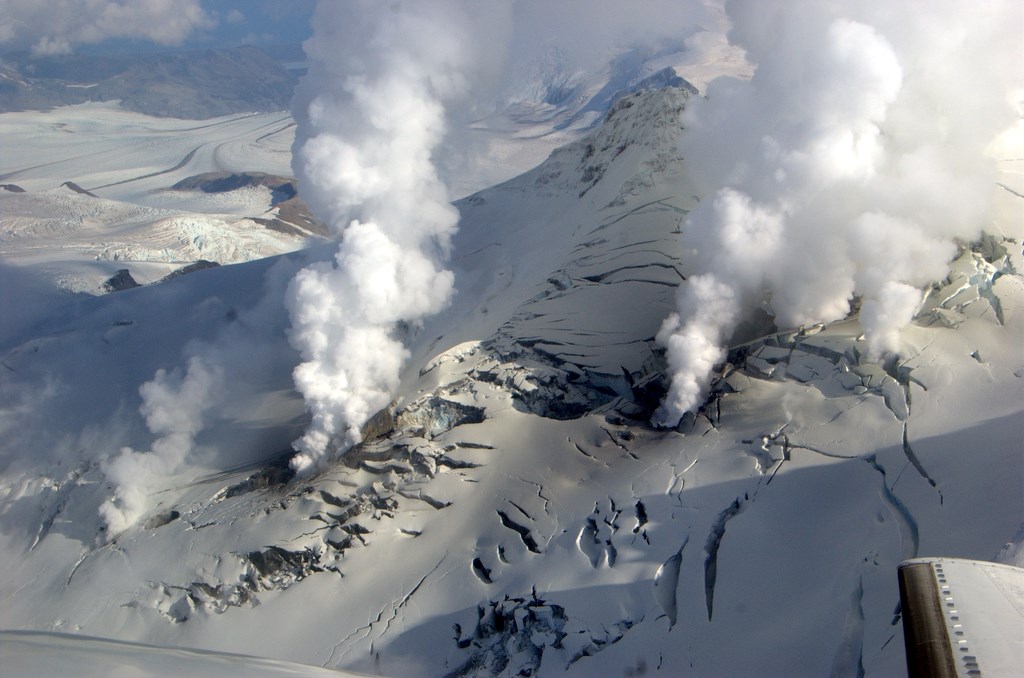
USGS photo.
Fumaroles are vents or openings at the surface where volcanic gases and vapors are emitted. Fumaroles are common features on active volcanoes, and are an important sign that a volcano is active in that fumaroles indicate the presence of heat from volcanic sources.
In between eruptions, fumaroles are one of the most dynamic features on volcanoes. Fumaroles hiss, growl, can put out noxious gases, and also present significant geohazards.
Fumaroles may be holes or be found at small cracks or along fissures. Multiple fumaroles often occur together. They are most common in or near the vent areas or craters on volcanoes, but may occur elsewhere where hot gases and steam escape at the surface.
Fumaroles emit a variety of gases, including water vapor, sulfur dioxide, carbon dioxide, hydrogen chloride, and hydrogen sulfide. Water vapor is generally the main component of fumarolic emissions and is usually from meteoric groundwater. Carbon dioxide, sulfur dioxide, and other gases originate from volcanic sources.
Because they contain volcanic gases, fumaroles provide important information to geologists about active volcanoes. An increase in a fumarole activity is often associated with unrest and may be an indication that magma is moving within a volcano. Volcanologists monitor the temperature of fumaroles as well as the composition of the gases.
Deposits of sulfur, sulfide minerals, opal, gypsum, hematite, and or other minerals may be found around fumaroles. Fumaroles also cause extensive hydrothermal alteration where the presence of sulfuric acid alters minerals in volcanic rocks to clays.
Fumaroles on Mt. Griggs, Katmai National Park, Alaska—https://youtu.be/qZ3WQ7A6hpI
Katmai NP is the site of the largest eruption of the 1900s and also contains ten active volcanoes, most of which have active fumaroles.
Katmai NP was first established as part of the National Park System in 1918 in the years following the 1912 eruption of Novarupta-Mount Katmai, which was the largest eruption of the 20th century. This Colossal (VEI 6) eruption deposited a vast ignimbrite (ash flow tuff) which was still emitting steam and volcanic gases from thousands of fumaroles when scientists first visited the site in 1916 and named it the Valley of Ten Thousand Smokes.
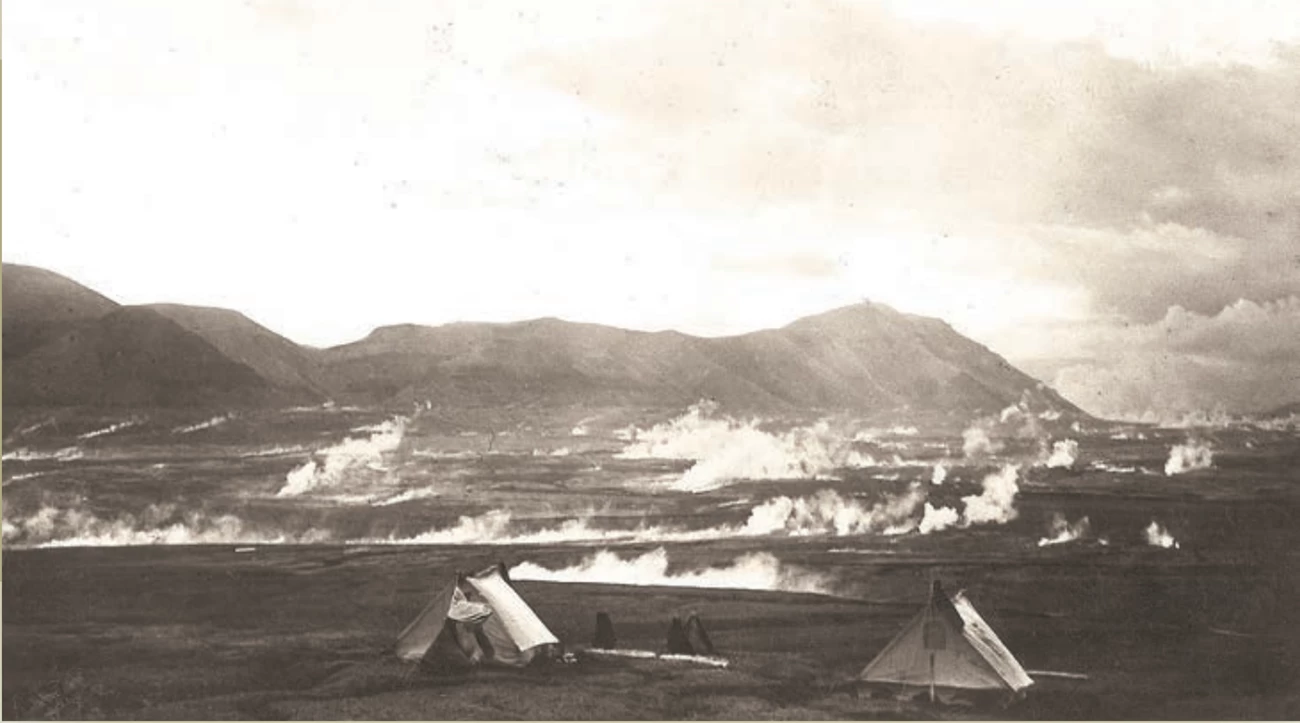
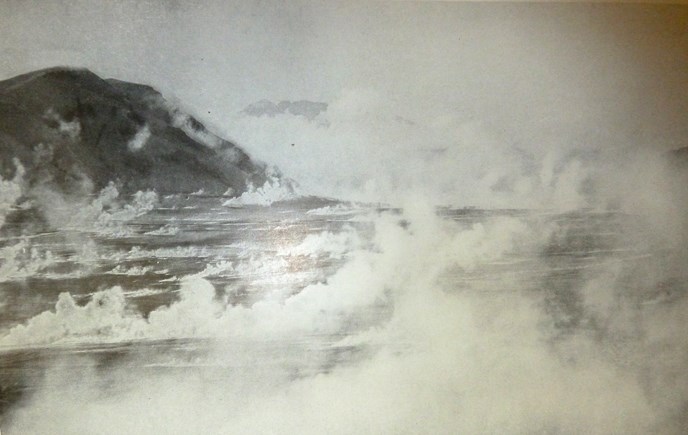
Photograph by E.C. Kolb and published in Griggs, 1922.
The 1912 eruption of Novarupta-Mount Katmai deposited an ignimbrite that was up to 660 ft thick (200 m) thick that was emplaced at a temperature of 1380 °F (750 °C). In 1917, the ignimbrite was still very hot as 3-foot (1-m) deep pits dug into its surface approached the boiling temperature and Griggs estimated that more than 1,000 fumaroles had plumes of steam and volcanic gases more than 500 ft (150 m) in height. By 1929 only a few hundred fumaroles were still present and by the 1990s, the last fumaroles had extinquished.
The locations of extinct fumaroles on the Valley of Ten Thousand Smokes ignimbrite are evident today by discoloration and alteration of the rock. Both linear and circular orifices are seen in the barren surface of the valley. Most of the steam released in the fumaroles came from buried snow fields, precipitation and groundwater.
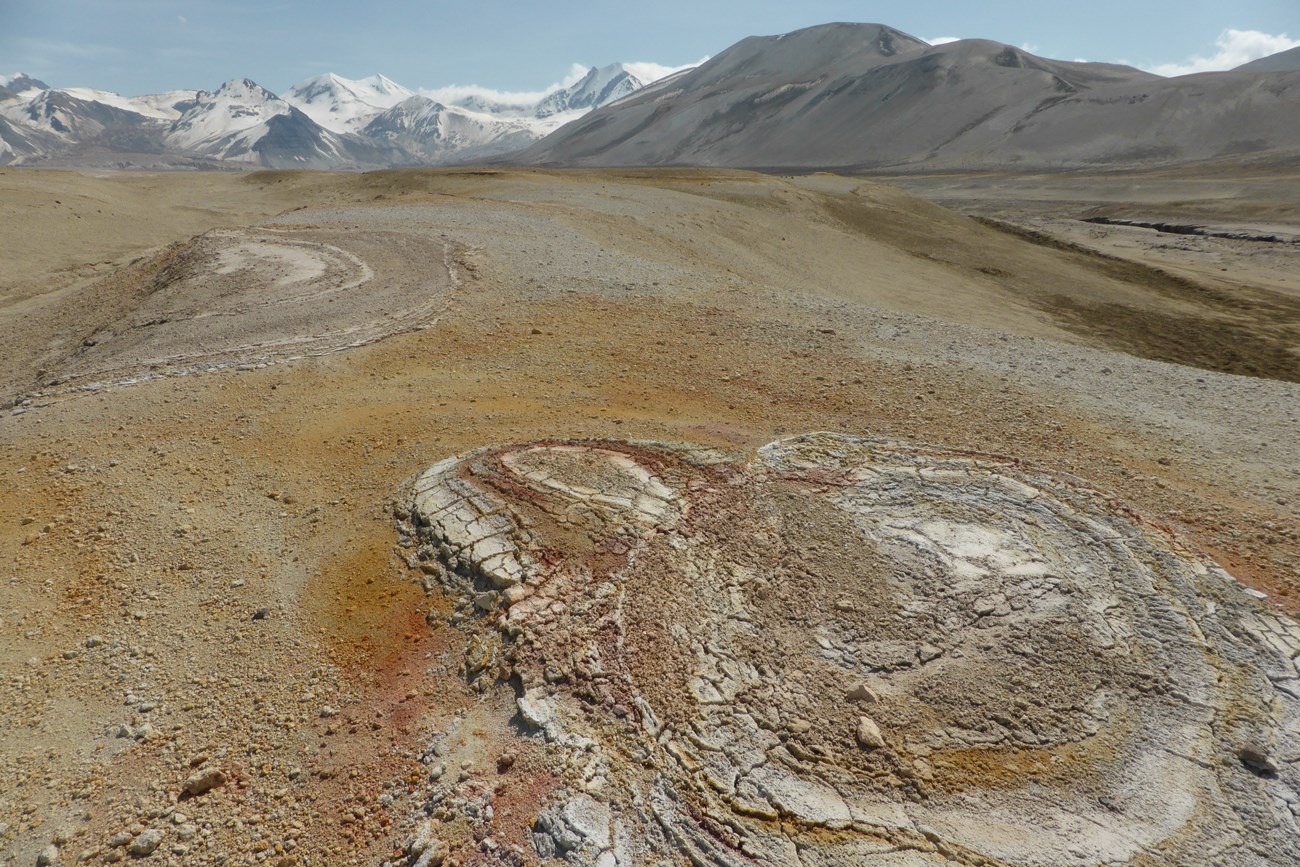
NPS photo by M. Fitz.
Fumaroles are present on most of the active volcanoes in Katmai National Park, including Trident, Martin, Mageik, Mount Griggs, and Douglas.
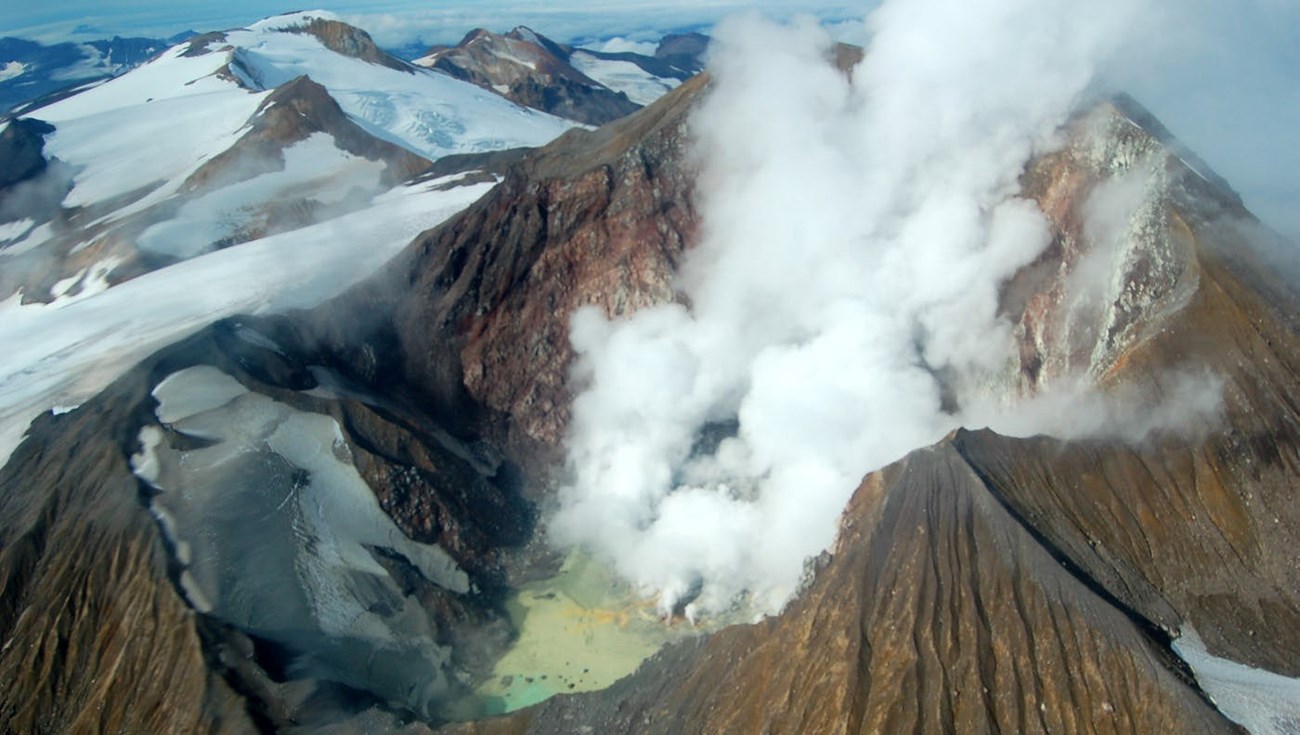
USGS photo taken August 26, 2006.
Fumaroles are present in several geothermal areas in Lassen Volcanic NP, including Sulphur Works, Little Hot Springs Valley, Bumpass Hell, and Devils Kitchen. The temperature and vigor of fumaroles in the park vary from year-to-year and season-to-season. Fumaroles have a lower temperature in the spring because of mixing with abundant shallow groundwater, and are hotter and dryer in the late summer and during periods of drought.
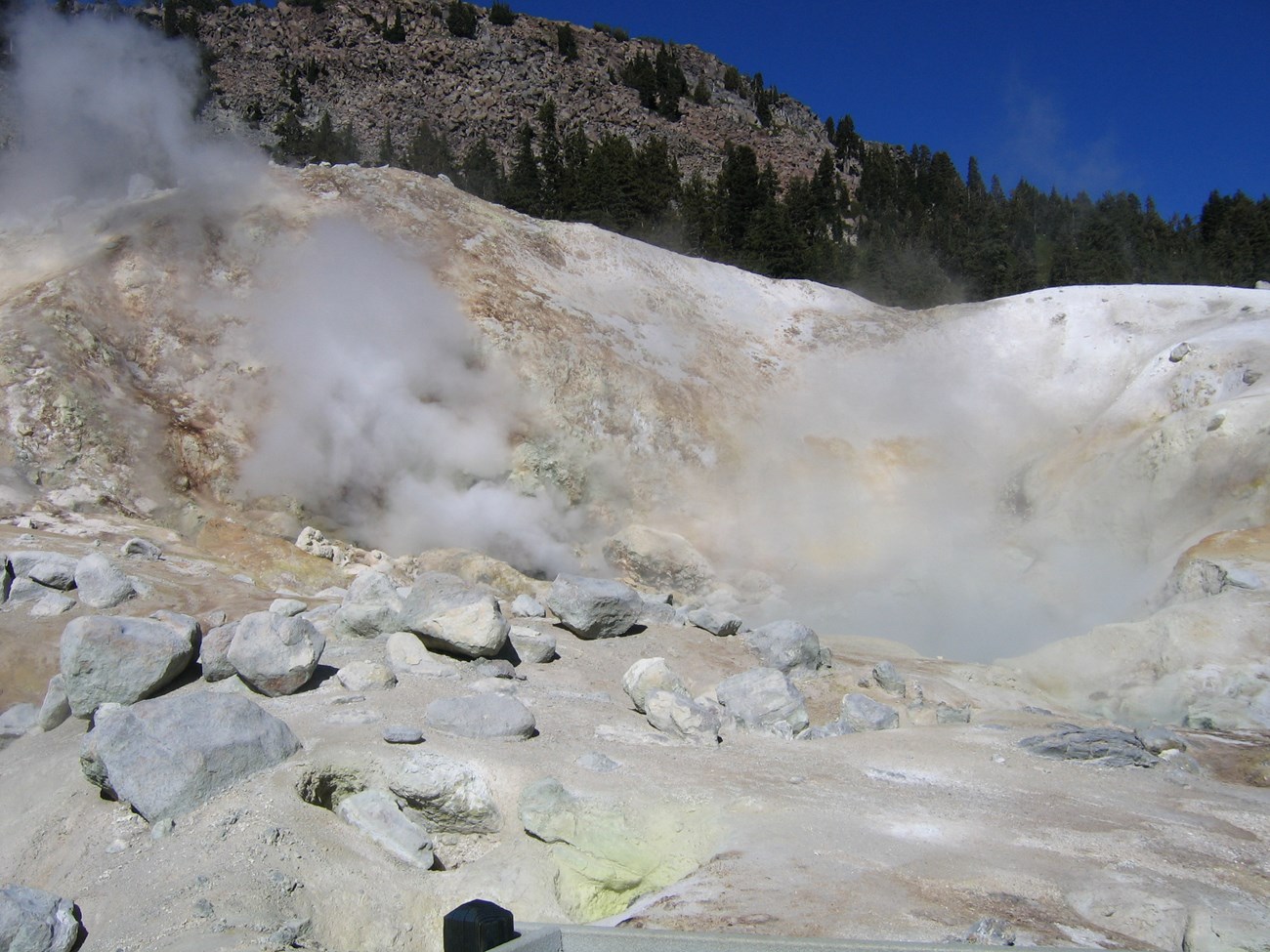
NPS photo.
Fumaroles at Mount Rainier’s summit have created a network of ice caves in the glaciers that fill the volcano’s craters. These fumaroles emit largely steam from shallow groundwater which is heated by an underlying magmatic hydrothermal system.
Fumaroles are present in several geothermal areas in Yellowstone NP, including Norris Geyser Basin, Roaring Mountain, and the Mud Volcano Thermal Area. Approximately 2,000 fumaroles are found within Yellowstone.
Fumaroles are the hottest geothermal features in Yellowstone NP. They also typically have a different chemistry than geysers and hot springs. Fumaroles and mudpots have acid-sulfate water, and are acidic with a low pH. Geysers and hot springs are rich in chlorine and silica and have a high pH.
These fumaroles consist of meteoric water (water from precipitation) that has been charged with hot gases from a magmatic source.
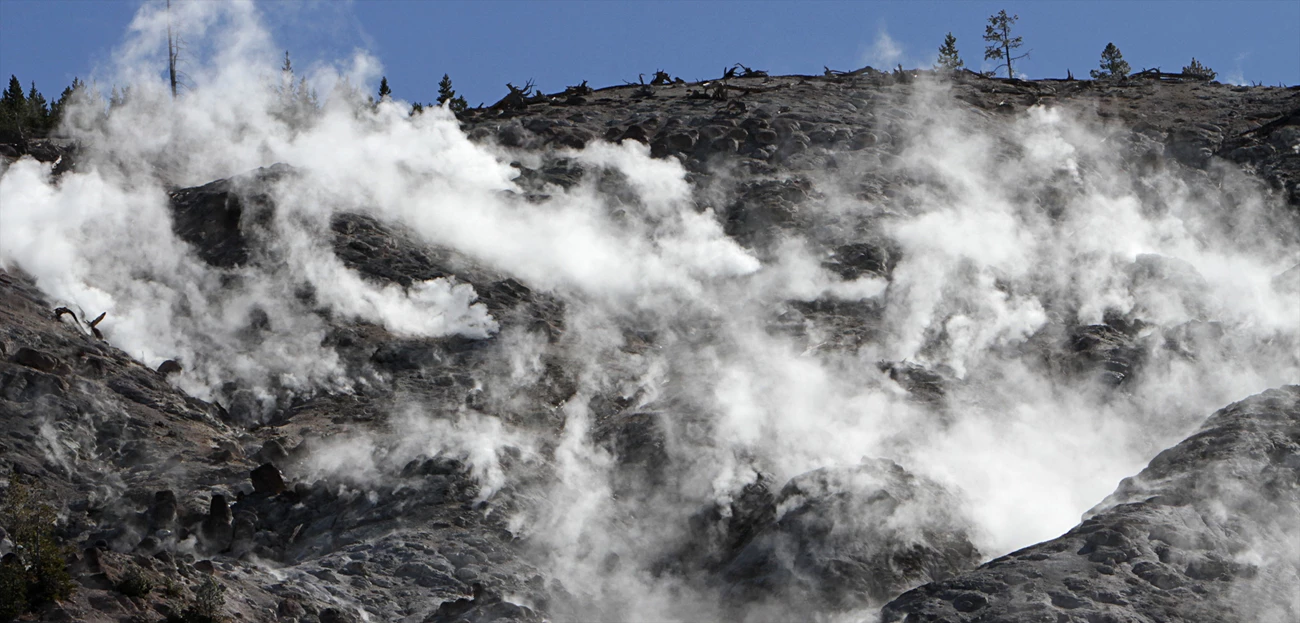
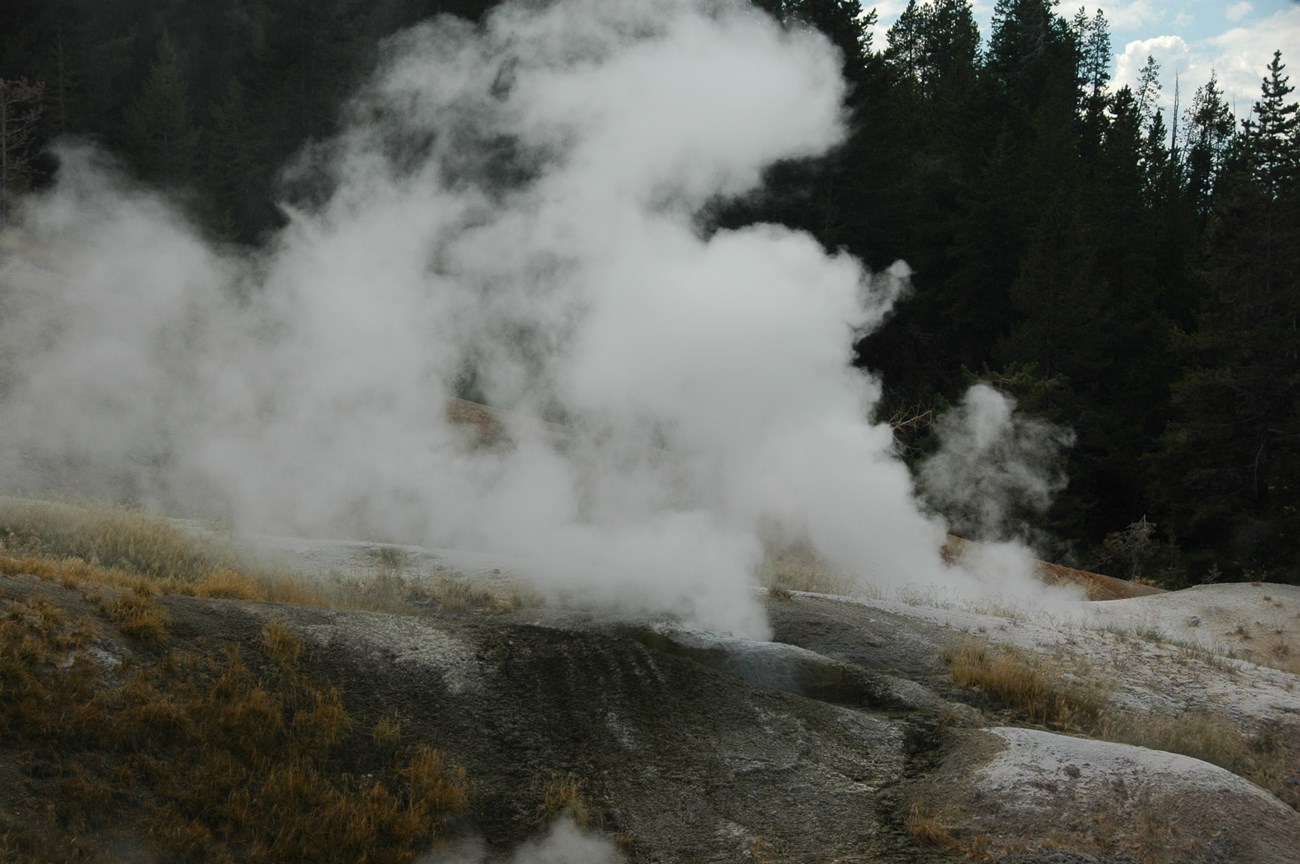
John St. James photo (Flickr).
One of the first features you'll see/hear as you descend the trail into Porcelain Basin at Norris Geyser Basin.
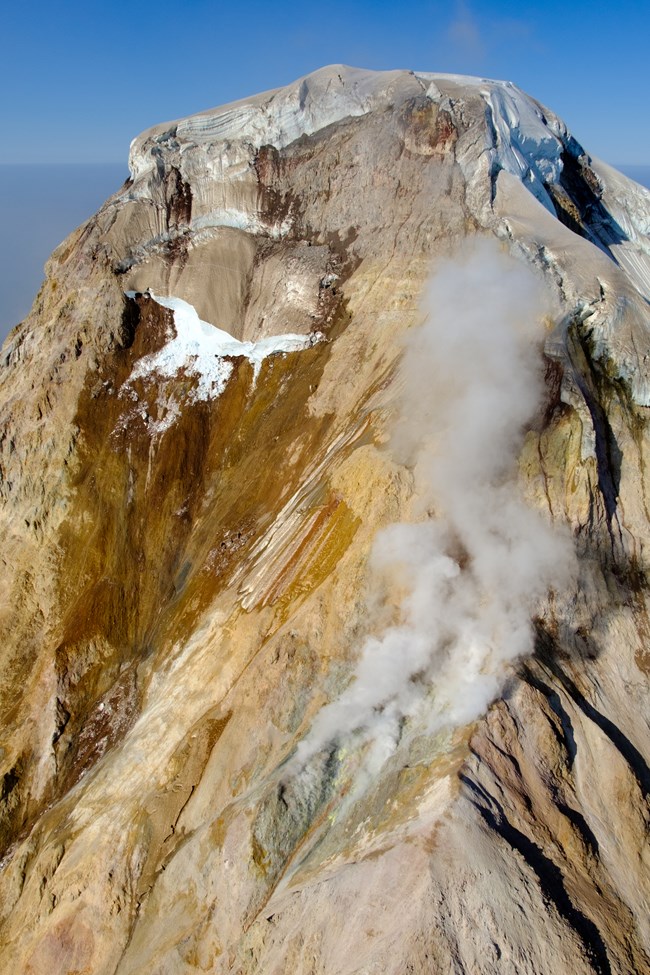
Both Redoubt and Iliamna volcanoes have active fumaroles on them, which sometimes produce steam plumes that can be viewed from a distance.
Redoubt experienced an increase in fumarolic activity in the months prior to its 2009 eruption.
Photo (right): Fumaroles near the summit of Iliamna in 2019.
USGS photo/Matt Loewen.
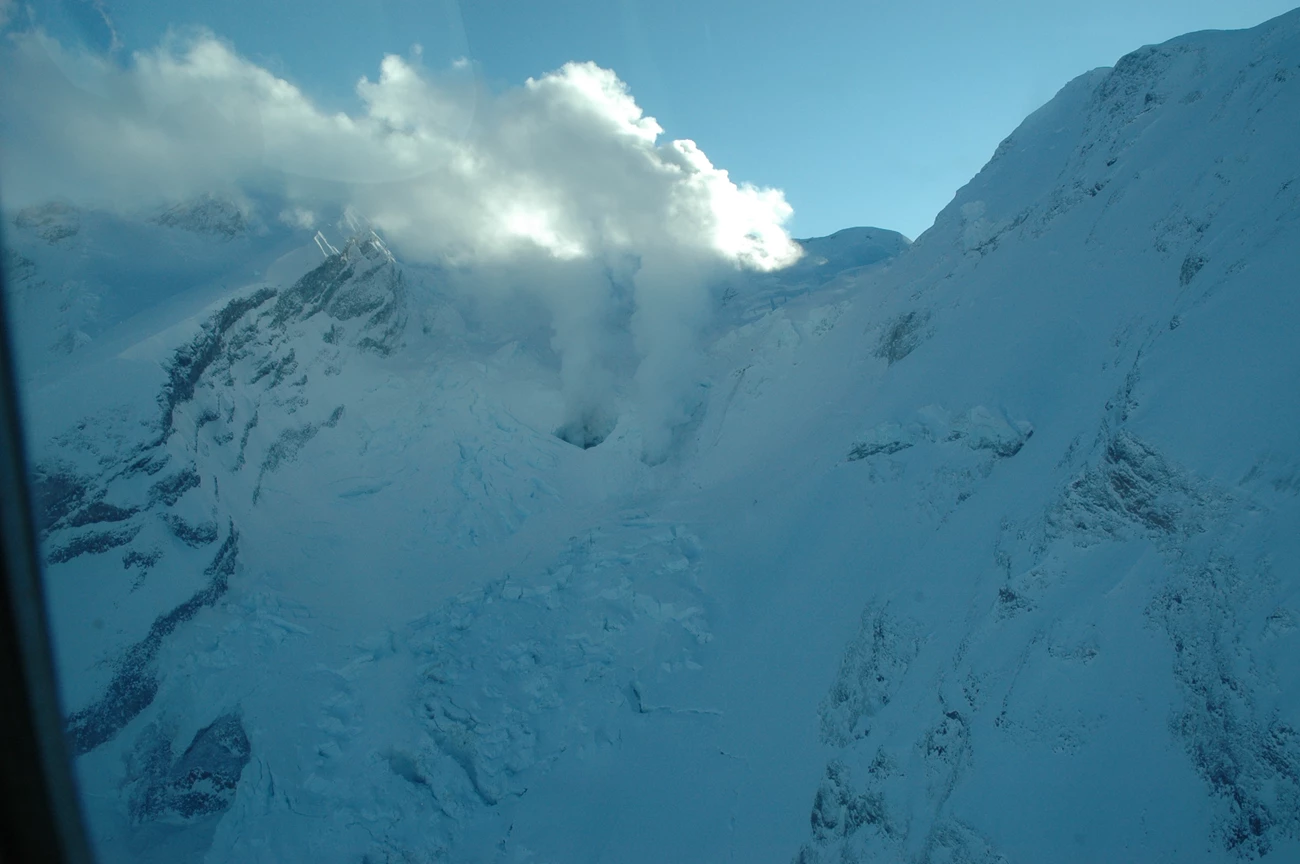
USGS Alaska Volcano Observatory photo.
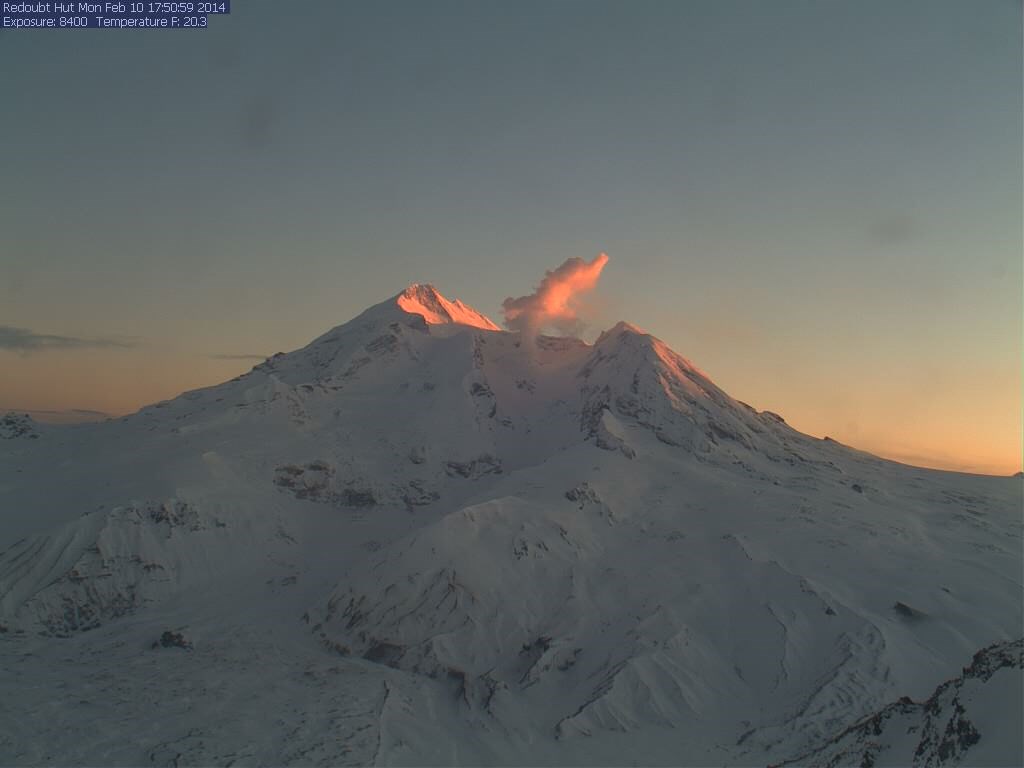
USGS Alaska Volcano Observatory photo.
Fumaroles are located in places in and around the caldera at the Kīlauea summit. Wahinekapu (Steaming Bluff) and Ha'akulamanu (Sulphur Banks) are two of the fumarolic features. Steaming Bluff emits steam formed from groundwater that has been heated by magma deep in the subsurface. The fumaroles at Sulphur Banks emit volcanic gases including sulfur dioxide and hydrogen sulfur as well as steam from heated groundwater.
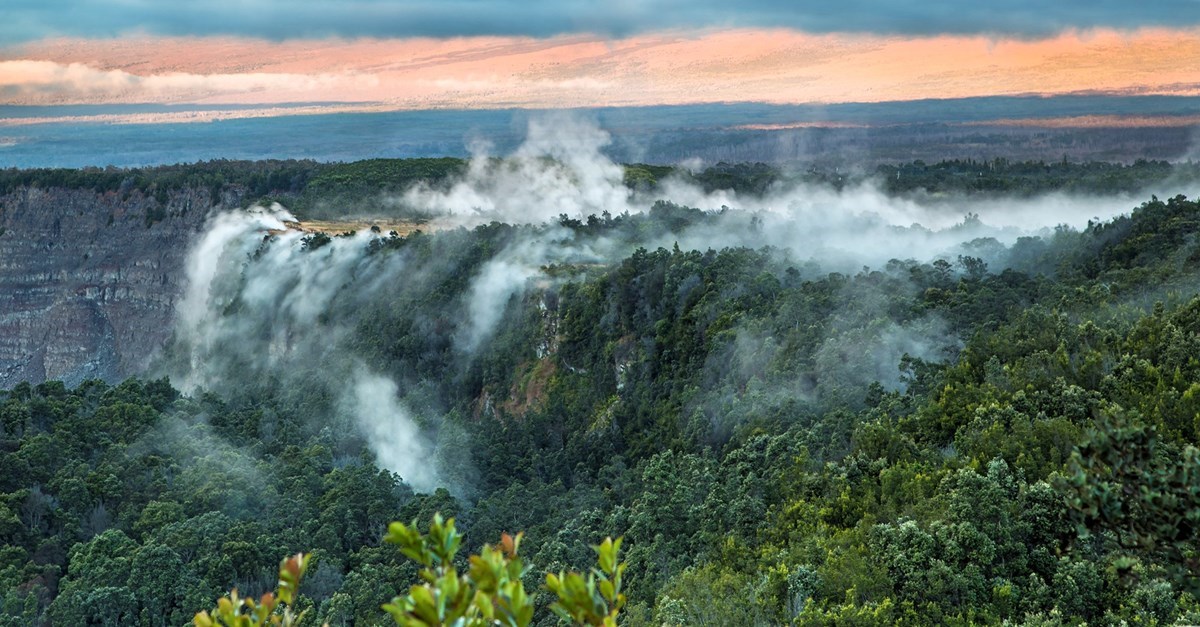
NPS photo by J. Wei.
Aniakchak National Monument & Preserve (ANIA), Alaska—[ANIA Geodiversity Atlas] [ANIA Park Home] [ANIA npshistory.com]
Hawai'i Volcanoes National Park (HAVO), Hawai'i—[HAVO Geodiversity Atlas] [HAVO Park Home] [HAVO npshistory.com]
Katmai National Park & Preserve (KATM), Alaska—[KATM Geodiversity Atlas] [KATM Park Home] [KATM npshistory.com]
Lake Clark National Park & Preserve (LACL), Alaska—[LACL Geodiversity Atlas] [LACL Park Home] [LACL npshistory.com]
Lassen Volcanic National Park (LAVO), California—[LAVO Geodiversity Atlas] [LAVO Park Home] [LAVO npshistory.com]
Mount Rainier National Park (MORA), Washington—[MORA Geodiversity Atlas] [MORA Park Home] [MORA npshistory.com]
Valles Caldera National Preserve (VALL), New Mexico—[VALL Geodiversity Atlas] [VALL Park Home] [VALL npshistory.com]
Wrangell-St. Elias National Park (WRST), Alaska—[WRST Geodiversity Atlas] [WRST Park Home] [WRST npshistory.com]
Yellowstone National Park, Wyoming (YELL), Montana, and Idaho—[YELL Geodiversity Atlas] [YELL Park Home] [YELL npshistory.com]
Part of a series of articles titled Volcanic Features.
Previous: Crater Lakes
Next: Lava Lakes
Last updated: April 18, 2023